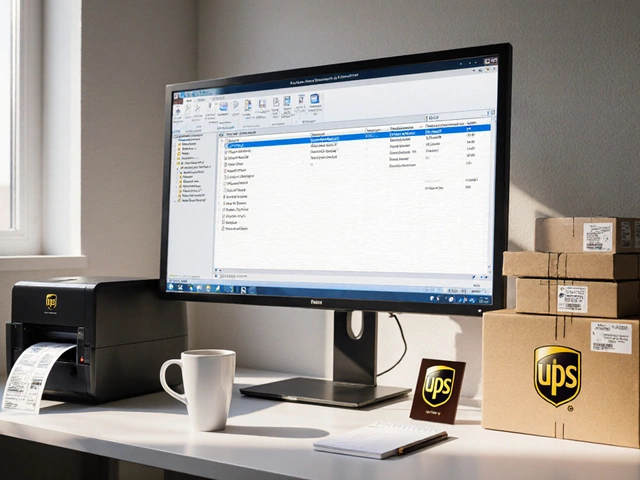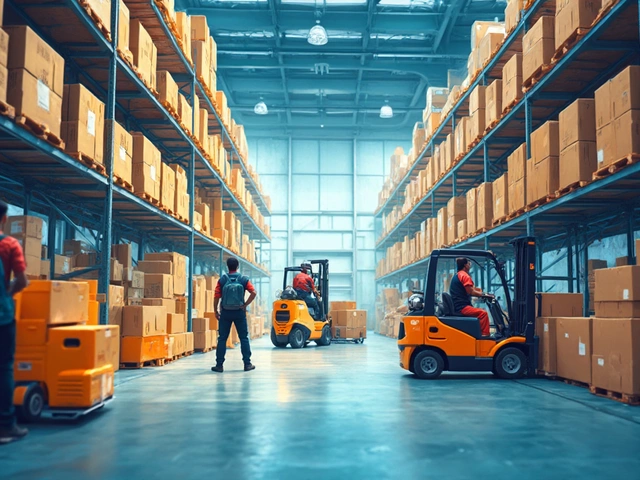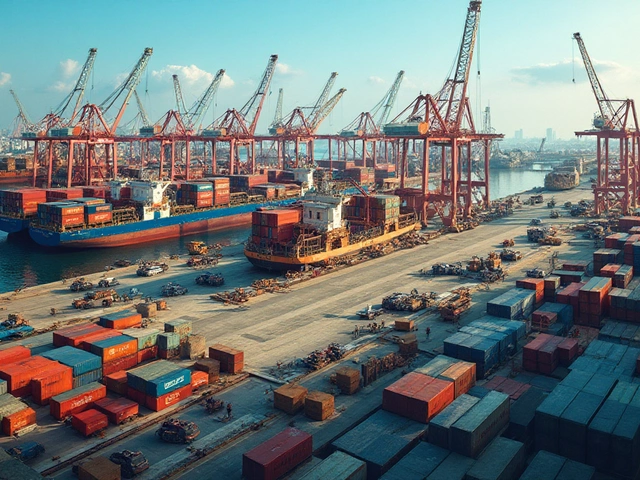Amazon Logistics Startup Cost Calculator
Calculate Your Startup Costs
Results
Enter your details above to see your startup costs
How It Works
Our calculator estimates your startup costs based on the latest Amazon DSP program requirements and current market rates. Input your specific parameters to get a customized budget plan.
- Vehicle costs are based on $15,000-$30,000 per truck for purchase or $2,200/month per truck for lease
- Insurance costs range from $1,200-$2,500 per vehicle per year
- Warehouse lease rates vary by location: Toronto $12/sq ft/yr, Montreal $10/sq ft/yr, Vancouver $18/sq ft/yr, Calgary $14/sq ft/yr
- Software costs $300-$800 per month
- Staff salaries average $45,000-$65,000 per employee annually
Note: These are estimated costs based on the article data. Actual costs may vary based on your specific circumstances.
Trying to figure out the price tag behind launching your own Amazon logistics operation can feel like solving a puzzle with missing pieces. Below you’ll see exactly what you need to budget for, how the costs break down, and which expenses you can trim without hurting performance.
Key Takeaways
- Initial vehicle fleet outlay ranges from $15,000to$30,000 per truck.
- Commercial auto insurance adds $1,200to$2,500 per vehicle each year.
- Warehouse lease in most Canadian metros starts at $12persqft per year.
- Software tools (routing, telematics, payroll) typically cost $300to$800 per month.
- Full‑time staff (drivers, dispatchers, admin) averages $45,000to$65,000 per employee annually.
What is Amazon Logistics?
Amazon Logistics is the network of delivery services Amazon uses to move packages from fulfillment centers to customers' doors, including the Delivery Service Partner (DSP) program and Flex drivers. It lets entrepreneurs run a delivery fleet under the Amazon brand, handling the last‑mile stretch that most e‑commerce sellers rely on. The model is appealing because Amazon provides a steady stream of parcels, routing software, and branding, while partners shoulder the operational costs.
Understanding the Amazon DSP Program
Amazon Delivery Service Partner is a franchise‑like program that lets small businesses own and operate a fleet of delivery vans to handle Amazon orders in a specific geography. DSPs must meet a set of requirements-minimum capital, insurance, driver hiring standards, and a commitment to meet Amazon’s performance metrics. The program is the primary entry point for anyone asking, “How much does it cost to start Amazon logistics?” because it defines the baseline financial commitments.
Cost Breakdown - The Major Buckets
Below is a detailed look at each cost category you’ll encounter when setting up a DSP or a similar Amazon‑aligned operation.
| Category | Low End | High End | Notes |
|---|---|---|---|
| Vehicle fleet (purchase or lease) | $15,000 | $30,000 | Based on 12‑ft cargo vans; leasing can reduce upfront cash outlay. |
| Commercial auto insurance | $1,200 | $2,500 | Depends on coverage level and driver record. |
| Warehouse lease | $12/sqft/yr | $22/sqft/yr | Toronto average; includes basic utilities. |
| Route optimization software | $300/mo | $800/mo | Includes telematics, driver app, and Amazon’s API integration. |
| Staff salaries (drivers & admin) | $45,000/yr | $65,000/yr | Average Canadian wages for full‑time drivers. |
| Vehicle financing (interest) | $1,500/yr | $3,200/yr | Based on a 5‑year loan at 5‑7% APR. |
| Miscellaneous (fuel, permits, branding) | $2,000/yr | $5,500/yr | Fuel price assumptions: CAD1.55perliter. |
Vehicle Fleet: Purchase vs. Lease
Vehicle financing is the process of borrowing money to buy delivery vans, typically spread over a 3‑ to 5‑year term with interest rates around 5‑7%. Buying outright locks up capital but eliminates monthly lease payments. Leasing, on the other hand, usually requires a 10‑20% down payment and a 24‑month term, giving you flexibility to upgrade to newer, more fuel‑efficient models as Amazon updates its vehicle specs.
Most first‑time DSPs start with a modest fleet of four to six vans. At $18,000 per van (including branding), the upfront purchase cost sits around $72,000. Leasing the same fleet might run $2,200 per month, which translates to $26,400 for the first two years-a sizable cash‑flow advantage for entrepreneurs with limited seed money.
Insurance - Protecting Your Assets
Commercial auto insurance provides coverage for vehicle damage, liability, and cargo loss, often required by local regulations and Amazon’s partner agreements. In Ontario, the minimum liability limit is CAD1million, but most DSPs opt for CAD5million to stay competitive. Premiums vary widely based on driver experience, vehicle age, and claim history. Expect to pay between $100 and $210 per vehicle each month.
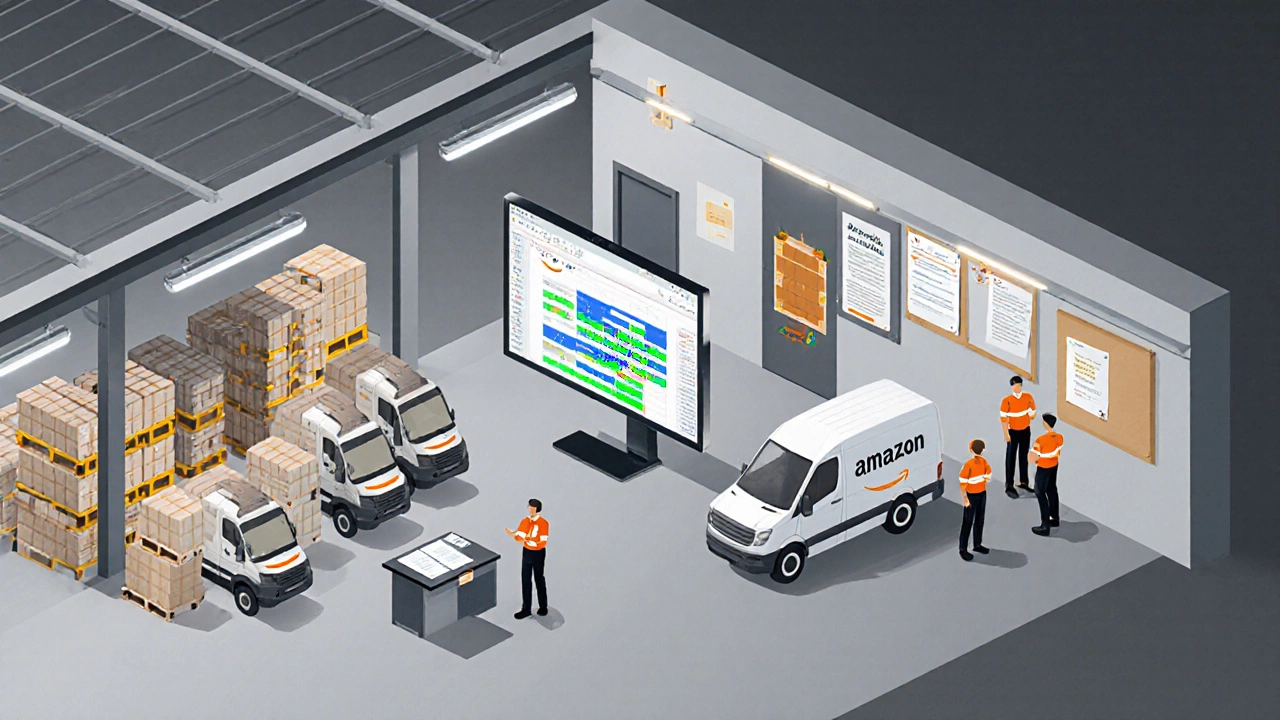
Warehouse Space: Where the Packages Wait
Warehouse lease is the rental agreement for a storage facility where inbound parcels are sorted before routes are generated. Amazon typically expects partners to hold a buffer of 2-3 days' worth of packages. In Toronto’s industrial districts, a 5,000‑sq‑ft space costs roughly CAD60,000peryear (≈$12/sqft). Adding basic racking and climate control adds another $8,000‑$12,000 annually.
If you already own a small lot or share space with another business, you can shave $10,000‑$15,000 off the yearly budget.
Software Tools - The Hidden Engine
Route optimization software powers the algorithms that assign packages to drivers, minimize mileage, and integrate with Amazon’s delivery API. Popular options in 2025 include FleetOps, Bringg, and Amazon’s own DSP dashboard. Subscription plans range from $300to$800 per month, depending on the number of vehicles and the depth of analytics.
Many startups start with the basic Amazon DSP portal (free) and upgrade to a third‑party platform once volume exceeds 500 packages per day.
Staffing - Drivers, Dispatchers, and Admin
Third‑party logistics firms often supplement their workforce with temporary drivers or outsource dispatch to reduce overhead. For a DSP, the core team includes:
- Drivers (full‑time or part‑time) - average salary CAD48,000peryear.
- Dispatch supervisor - CAD55,000peryear.
- Administrative assistant - CAD42,000peryear.
Benefits, payroll taxes, and overtime can push total labor costs to roughly 30% of your operating budget.
Fuel and Miscellaneous Operating Expenses
Fuel remains a volatile line item. Assuming an average of 250km per day per van and a fuel efficiency of 12km/L, each vehicle consumes about 21L daily. With the 2025 Canadian average of CAD1.55perliter, monthly fuel cost for a four‑van fleet sits near $4,000 CAD (≈$3,200USD).
Additional expenses include vehicle registration, branding decals (Amazon’s orange and black livery costs about $250 per van), and local permits. Budget $1,000‑$2,000 per year for these items.
Putting the Numbers Together - Sample Startup Budget
Let’s walk through a realistic scenario for a Toronto‑based DSP launching with four vans.
- Vehicle acquisition: Lease 4 vans at $2,200/mo → $26,400/yr.
- Insurance: $1,800/yr per van → $7,200/yr.
- Warehouse lease: 5,000sqft @ $12/sqft → $60,000/yr.
- Software subscription: $500/mo → $6,000/yr.
- Labor: 5 staff members avg. $55,000/yr → $275,000/yr.
- Fuel: $3,200/yr.
- Miscellaneous (branding, permits): $2,000/yr.
First‑year total ≈ $376,800. After the initial 12‑month ramp‑up, many cost items stabilize, and revenue from Amazon’s per‑package fee (average $0.35USD) can offset a large chunk of the outlay once you hit 10,000 packages per month.
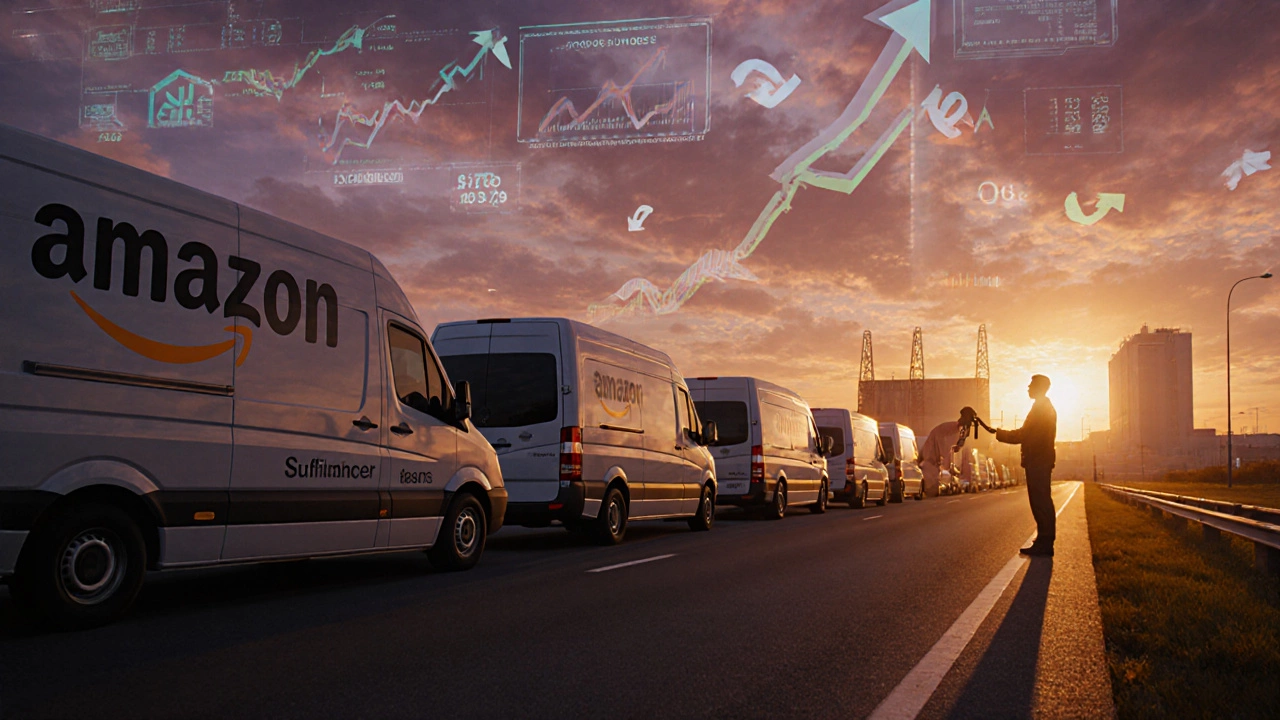
Ways to Reduce Your Startup Cost
- Start with a lease‑to‑own program: Some Canadian financial institutions let you convert a lease into ownership after 24 months, spreading the capital expense.
- Partner with an existing warehouse: Co‑locating reduces rent and shares utility costs.
- Leverage Amazon Flex drivers: In the early months, use Flex couriers for overflow instead of hiring full‑time drivers.
- Negotiate bulk insurance: Group policies for 5+ vehicles often shave 10-15% off premiums.
- Take advantage of Ontario’s small‑business grants: The province offers up to $20,000 for equipment purchases in logistics.
Funding Options for Aspiring DSPs
Because the initial outlay can exceed $300,000, many entrepreneurs look for external funding. Common sources include:
- Bank loans: Traditional term loans with 5‑year amortization.
- Government grants: Canada‑SME programs targeting green logistics and job creation.
- Angel investors: Individuals interested in e‑commerce infrastructure.
- Equipment leasing firms: Lease‑to‑own structures that bundle vehicle and software costs.
Is It Worth It? - ROI Snapshot
Assuming an average of 12,000 packages per month, the gross revenue from Amazon’s per‑package fee would be roughly $4,200USD monthly. Subtracting variable costs (fuel, insurance, driver wages) leaves about $2,200USD profit before rent and software. After covering fixed costs, the break‑even point typically lands around the 18‑month mark for a four‑van operation in a major Canadian city.
Scale matters: Adding two more vans usually improves profit margin by 12-15% because many fixed expenses stay the same while package volume grows.
Next Steps - From Planning to Launch
- Validate your market - Use Amazon’s DSP portal to see if your city has a shortage of delivery capacity.
- Secure financing - Prepare a detailed cost sheet (like the one above) and approach lenders or grant agencies.
- Choose a vehicle model - Check Amazon’s vehicle compliance list for 2025.
- Sign a warehouse lease - Aim for a location within 15km of a major fulfillment center.
- Enroll in Amazon’s DSP onboarding - Complete the online training modules and pass the compliance exam.
- Hire and train drivers - Focus on safety protocols and Amazon’s delivery standards.
- Launch and monitor - Use the DSP dashboard to track on‑time delivery rates and adjust routes as needed.
Frequently Asked Questions
What is the minimum capital required to start an Amazon DSP?
Amazon suggests a minimum of $25,000USD in liquid assets, but most new partners budget $50,000‑$75,000USD to cover vehicle lease, insurance, and initial staffing.
Can I use my own warehouse instead of leasing?
Yes. If you already own a suitable space, you can deduct the rent expense, which can lower first‑year costs by $10,000‑$20,000USD.
Do I have to buy brand‑new vans?
Amazon requires vans that meet its safety and cargo‑space standards. Certified‑pre‑owned models from 2022 or newer are acceptable and can save 20‑30% on purchase price.
How fast can I start delivering after signing the DSP agreement?
The onboarding timeline is typically 8‑12 weeks: 2 weeks for paperwork, 4‑6 weeks to acquire and brand vehicles, and 2 weeks for driver hiring and training.
What ongoing fees does Amazon charge DSPs?
Beyond the per‑package fee, Amazon assesses a monthly technology fee of about $100‑$200 and a performance‑based bonus program that can add 5‑10% to revenue if you exceed on‑time delivery targets.
By breaking down each expense line and planning your financing ahead of time, you can launch an Amazon logistics operation with confidence. The numbers look big, but smart choices around leasing, shared warehousing, and government incentives can shrink the bill dramatically.



